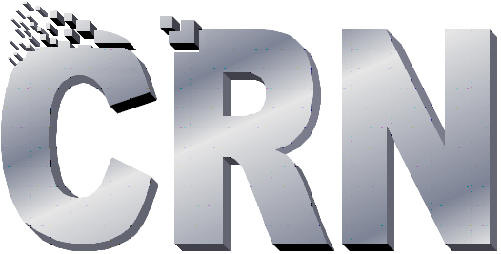 |
|
|
|
|
|
Join the conversation at CRNtalk!
|
When K. Eric Drexler (right) popularized the word 'nanotechnology' in the 1980's, he was talking about building machines on the scale of molecules, a few nanometers wide—motors, robot arms, and even whole computers, far smaller than a cell. Drexler spent the next ten years describing and analyzing these incredible devices, and responding to accusations of science fiction. Meanwhile, mundane technology was developing the ability to build simple structures on a molecular scale. As nanotechnology became an accepted concept, the meaning of the word shifted to encompass the simpler kinds of nanometer-scale technology. The U.S. National Nanotechnology Initiative was created to fund this kind of nanotech: their definition includes anything smaller than 100 nanometers with novel properties. Much of the work being done today that carries the name 'nanotechnology' is not nanotechnology in the original meaning of the word. Nanotechnology, in its traditional sense, means building things from the bottom up, with atomic precision. This theoretical capability was envisioned as early as 1959 by the renowned physicist Richard Feynman. — Richard Feynman, Nobel Prize winner in physics Based on Feynman's vision of miniature factories using nanomachines to build complex products, advanced nanotechnology (sometimes referred to as molecular manufacturing) will make use of positionally-controlled mechanochemistry guided by molecular machine systems. Formulating a roadmap for development of this kind of nanotechnology is now an objective of a broadly based technology roadmap project led by Battelle (the manager of several U.S. National Laboratories) and the Foresight Nanotech Institute.Shortly after this envisioned molecular machinery is created, it will result in a manufacturing revolution, probably causing severe disruption. It also has serious economic, social, environmental, and military implications. Four Generations Mihail (Mike) Roco of the U.S. National Nanotechnology Initiative has described four generations of nanotechnology development (see chart below). The current era, as Roco depicts it, is that of passive nanostructures, materials designed to perform one task. The second phase, which we are just entering, introduces active nanostructures for multitasking; for example, actuators, drug delivery devices, and sensors. The third generation is expected to begin emerging around 2010 and will feature nanosystems with thousands of interacting components. A few years after that, the first integrated nanosystems, functioning (according to Roco) much like a mammalian cell with hierarchical systems within systems, are expected to be developed.
Some experts may still insist that nanotechnology can refer to measurement or visualization at the scale of 1-100 nanometers, but a consensus seems to be forming around the idea (put forward by the NNI's Mike Roco) that control and restructuring of matter at the nanoscale is a necessary element. CRN's definition is a bit more precise than that, but as work progresses through the four generations of nanotechnology leading up to molecular nanosystems, which will include molecular manufacturing, we think it will become increasingly obvious that "engineering of functional systems at the molecular scale" is what nanotech is really all about. Conflicting Definitions Unfortunately, conflicting definitions of nanotechnology and blurry distinctions between significantly different fields have complicated the effort to understand the differences and develop sensible, effective policy. The risks of today's nanoscale technologies (nanoparticle toxicity, etc.) cannot be treated the same as the risks of longer-term molecular manufacturing (economic disruption, unstable arms race, etc.). It is a mistake to put them together in one basket for policy consideration—each is important to address, but they offer different problems and will require different solutions. As used today, the term nanotechnology usually refers to a broad collection of mostly disconnected fields. Essentially, anything sufficiently small and interesting can be called nanotechnology. Much of it is harmless. For the rest, much of the harm is of familiar and limited quality. But as we will see, molecular manufacturing will bring unfamiliar risks and new classes of problems. General-Purpose Technology Nanotechnology is sometimes referred to as a general-purpose technology. That's because in its advanced form it will have significant impact on almost all industries and all areas of society. It will offer better built, longer lasting, cleaner, safer, and smarter products for the home, for communications, for medicine, for transportation, for agriculture, and for industry in general.
Like electricity or
computers before it, nanotech will offer greatly improved efficiency in almost
every facet of life. But as a general-purpose technology, it will be dual-use,
meaning it will have many commercial uses and it also will have many military
uses—making far more powerful weapons and tools of surveillance. Thus it
represents not only wonderful
benefits for humanity,
but also grave risks.
The power of nanotechnology can be encapsulated in an apparently simple device called a personal nanofactory that may sit on your countertop or desktop. Packed with miniature chemical processors, computing, and robotics, it will produce a wide-range of items quickly, cleanly, and inexpensively, building products directly from blueprints.
Exponential Proliferation Nanotechnology not only
will allow making many high-quality products at very low cost, but it will allow
making new nanofactories at the same low cost and at the same rapid speed.
This unique (outside of biology, that is) ability to reproduce its own means of
production is why nanotech is said to be an exponential technology. It
represents a manufacturing system that will be able to make more manufacturing
systems—factories that can build factories—rapidly, cheaply, and cleanly. The
means of production will be able to reproduce exponentially, so in just a few
weeks a few nanofactories conceivably could become billions. It is a
revolutionary, transformative, powerful, and potentially very
dangerous—or
beneficial—technology.
Many of these questions
were first raised over a decade ago, and have not yet been answered. If the
questions are not answered with deliberation, answers will evolve independently
and will take us by surprise; the surprise is likely to be unpleasant. More Background on Nanotechnology:
|
Copyright © 2002-2008 Center for Responsible Nanotechnology TM CRN was an affiliate of World Care®, an international, non-profit, 501(c)(3) organization.
|